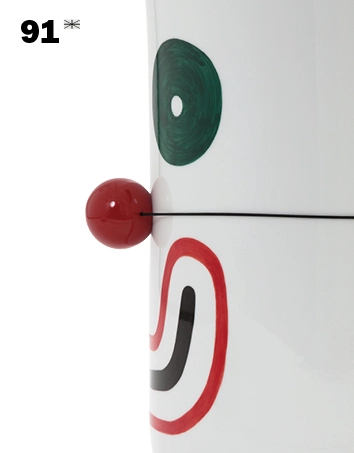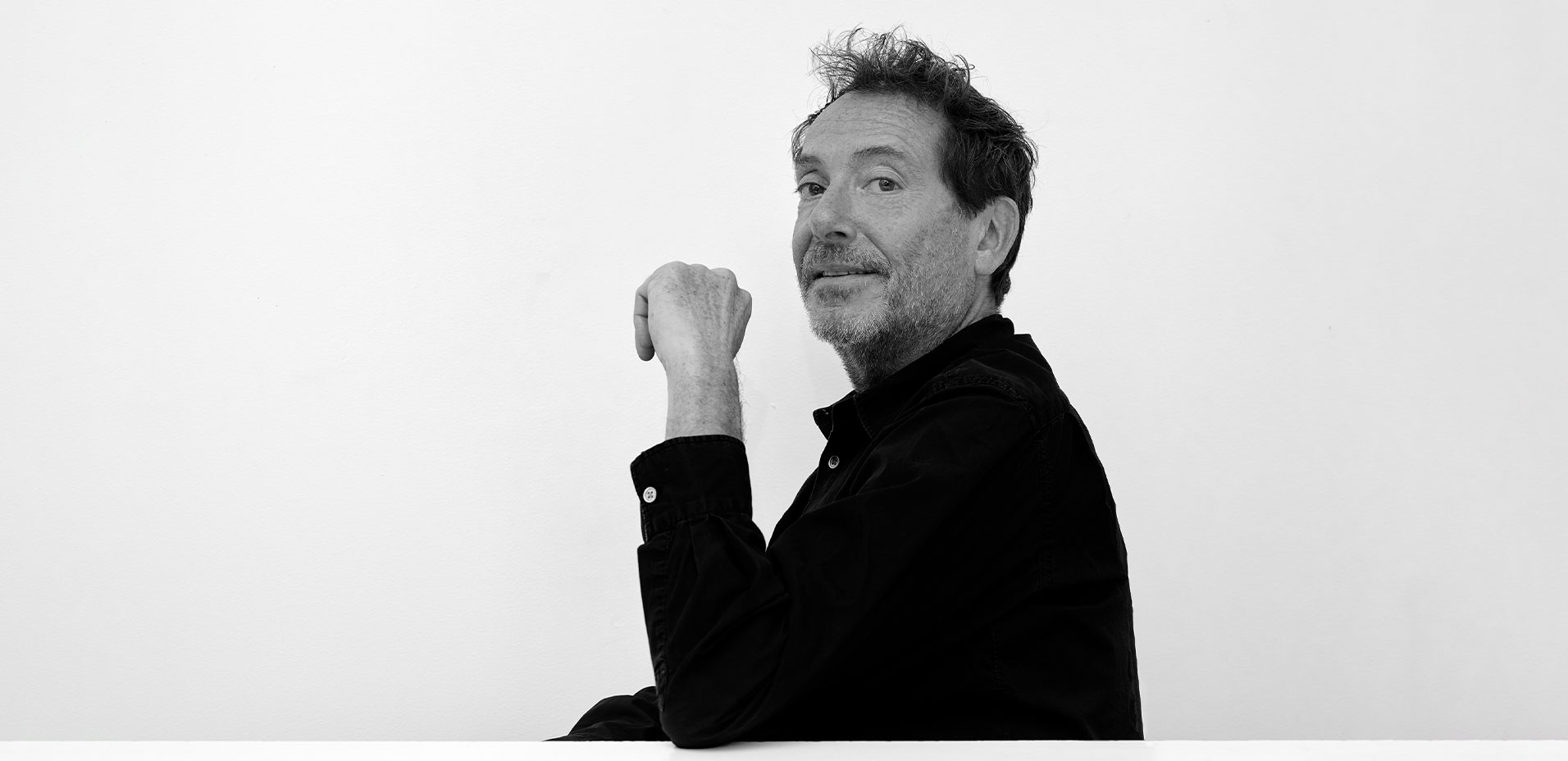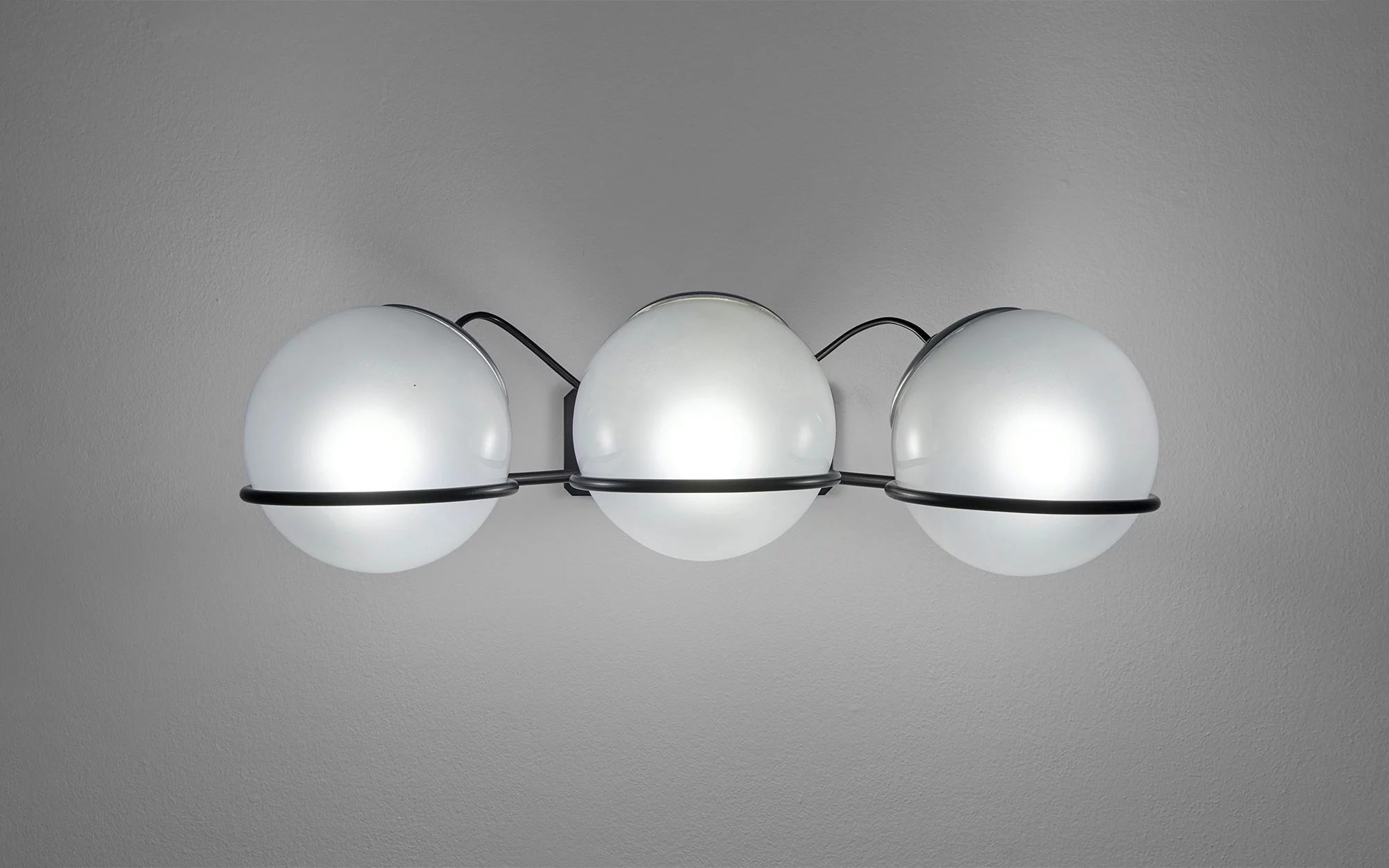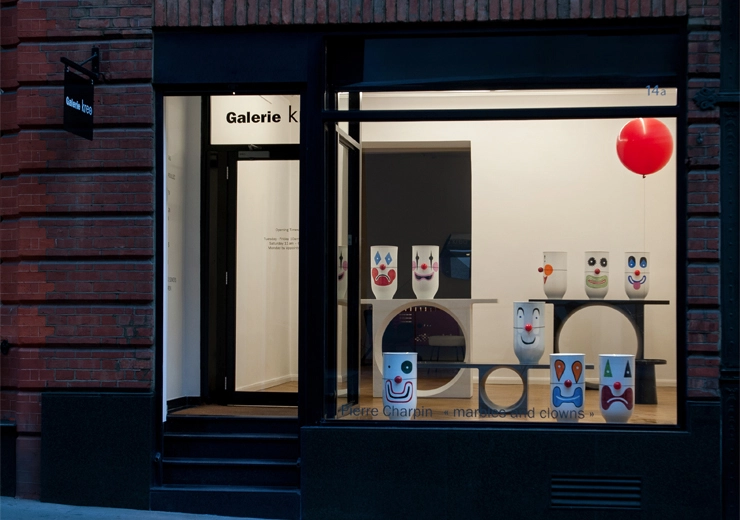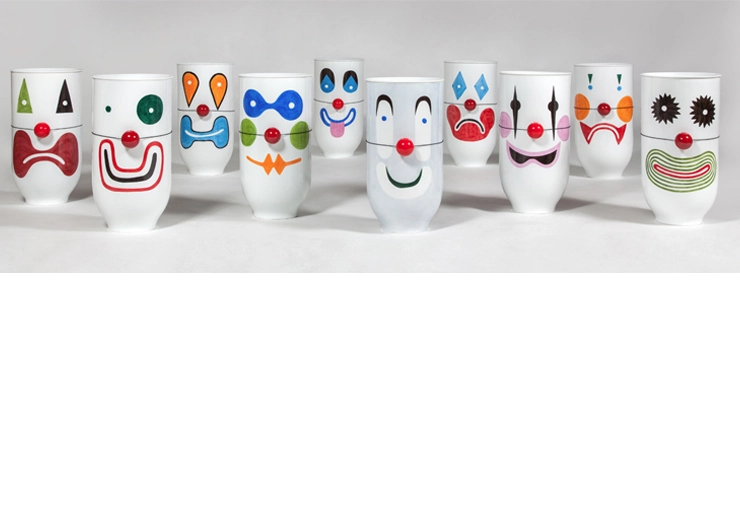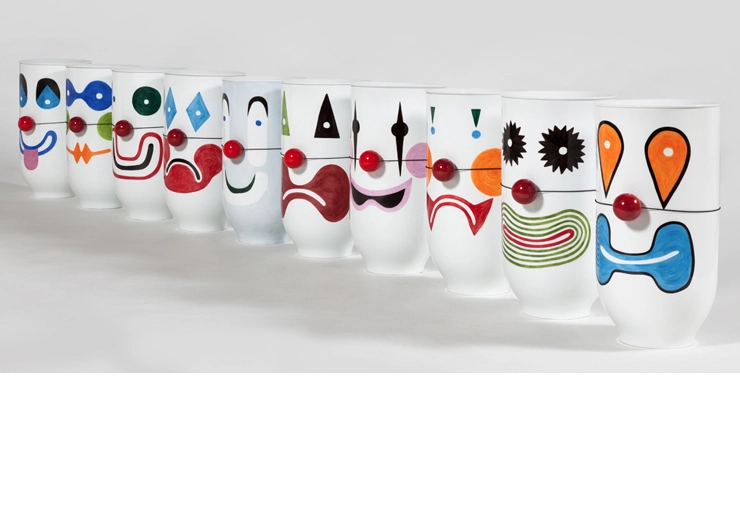“Marbles & Clowns”: as titles go, this one couldn’t really be any clearer about what lies in wait at this exhibition.
First up, the marbles. These come in the form of consoles and low tables. And then there are the clowns. Or, to be more precise, ten clown faces, which appear on the immaculate porcelain sides of the vases – the so-called “Charpin vases” – that I designed several years ago for the Manufacture Nationale de Sèvres, one of France’s best-known ceramic factories...
“Marbles & Clowns”: as titles go, this one couldn’t really be any clearer about what lies in wait at this exhibition.
First up, the marbles. These come in the form of consoles and low tables. And then there are the clowns. Or, to be more precise, ten clown faces, which appear on the immaculate porcelain sides of the vases – the so-called “Charpin vases” – that I designed several years ago for the Manufacture Nationale de Sèvres, one of France’s best-known ceramic factories. I say “appear”, but what the faces really do is inhabit or adorn these pieces, like make-up fit for the stage.
So there we have it: “Marbles & Clowns”. And in that order… it just sounds better, and you can never underestimate the importance of a title. But also because that’s the order they arrived on the page: the marbles simply came to me first. The clowns followed later… they weren’t part of the programme, not least because there never was a programme. Once again, the only entities were the unknown – the unexpected. So that’s how they made their entrance: no drum rolls or pre-show announcements, but flying in the face of the perfect, impassive solemnity and elegance of the marbles, which unsurprisingly remain stonily indifferent, as the expression goes.
Marble is shapeless when it exists in the landscape, in its mountainous origins, and only really becomes marble when it has been extracted. Once it has taken on the form of large, plane-parallel blocks, with more or less even sides, its qualities as a material ripe for sculpture are clear to see. After that, the block must be moulded patiently, either by hand or by machine (or sometimes even by digital means), the material subtracted – emptied – to create the finished work. Some people claim that truth lies hidden in these blocks, waiting to be chipped away, but there’s every reason to doubt this, because the fact is that truth comes in so many various and fortuitous forms. Whatever the case, marble is all about removal. Even the finishing and polishing processes involve removing a matte surface to reveal – in all its shiny brilliance – the inner beauty of the material. Just by looking at the collection’s console tables, whose middles have literally been emptied, this idea of removal is fully in evidence.
Clowns, on the other hand, won’t hear a word said about removal or subtraction. Quite the opposite, in fact. Theirs is a different way of being, singled out by a desire for addition, excess, transformation, hocus-pocus and make-up – known as “trucco” in Italian (images from Frederico Fellini’s I Clowns spring to mind). Whether they are feigning joy or sadness, their grotesque character hinges on the make-up tracing the contours of their eyes, mouths and sometimes their cheeks, not forgetting the addition of the obligatory red nose. This make-up is not about showcasing virtuosity, but all the same, you have to aim straight to avoid following one clownish footsteps further than the masks best left to the Commedia dell’arte or the carnival.
Now that the finishing touches have been put to the make-up – and without paying too much attention to the fact that Pipo, Nello, Zippo* and the others are only vases – the show is ready to begin.
“Marbles & Clowns” is a show in which each component plays its role with assurance, and where the “&” represents the intersection of everything that is created.
_
Pierre Charpin, June 2015

